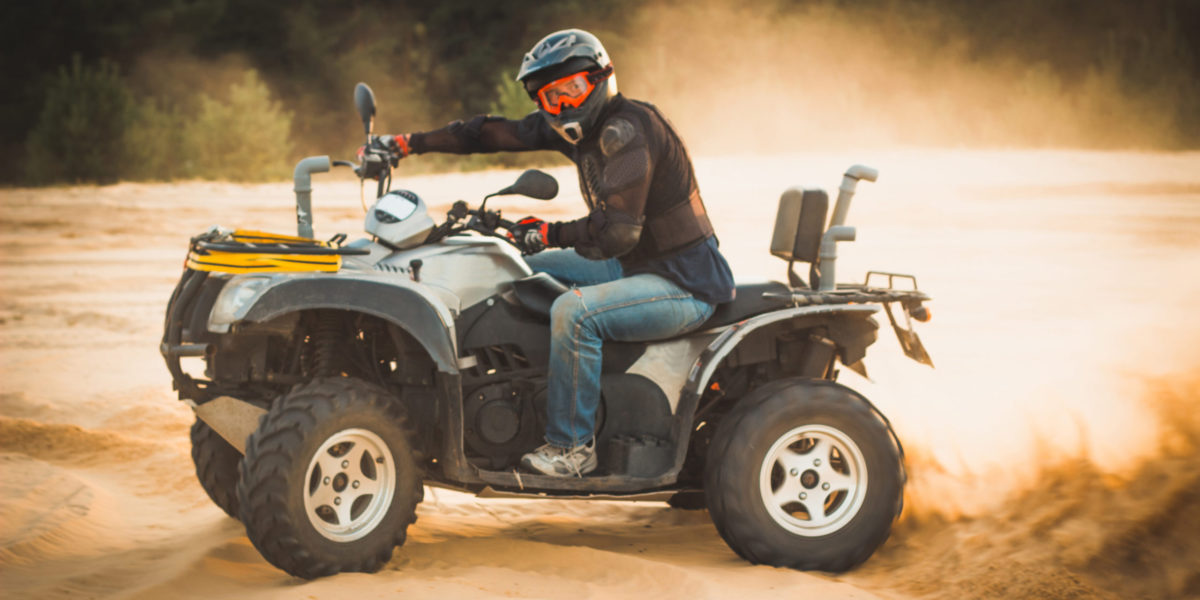Adventuring into the great outdoors on an ATV (All-Terrain Vehicle) is a thrilling way to explore rugged landscapes and connect with nature. Whether you are a seasoned off-roader or a novice looking to embark on your first journey, planning the perfect ATV tour requires careful consideration and preparation. This guide will walk you through the essential steps to ensure your off-road experience is both exhilarating and safe.
The Thrill of an ATV Tour
An ATV tour offers an exhilarating way to explore rugged landscapes and immerse oneself in the natural beauty of remote areas. Riding an All-Terrain Vehicle across diverse terrains—from sandy dunes and rocky paths to dense forests and muddy trails—provides a unique blend of adventure and excitement. Whether you’re navigating challenging obstacles or cruising along scenic routes, an ATV tour delivers a thrilling off-road experience. Beyond the adrenaline rush, it also allows riders to connect with nature, discover hidden gems, and create lasting memories with friends and family.
Choosing Your Destination
The first step in planning your ultimate ATV tour is selecting the perfect destination. This choice will significantly influence the type of terrain you encounter, the level of difficulty, and the overall experience.
1. Research Popular ATV Trails: Look for well-known ATV trails in your region or consider traveling to renowned off-road destinations. Places like Moab in Utah, the Hatfield-McCoy Trails in West Virginia, and the Imperial Sand Dunes in California offer diverse terrains and stunning landscapes.
2. Consider Terrain Preferences: Decide whether you prefer sandy dunes, rocky paths, forest trails, or muddy tracks. Each type of terrain offers a unique riding experience and challenges.
3. Check Trail Accessibility: Ensure the trails you choose are accessible and open to the public. Some trails may require permits or have seasonal restrictions.
Selecting the Right ATV
Choosing the right ATV for your adventure is crucial for a successful and enjoyable tour. Consider the following factors when selecting your vehicle:
1. Type of ATV: ATVs come in various types, including sport ATVs, utility ATVs, and side-by-side UTVs. Sport ATVs are designed for speed and agility, while utility ATVs are built for work and rugged terrain. UTVs offer a more comfortable ride with seating for multiple passengers.
2. Engine Size and Power: Match the ATV’s engine size to your skill level and the terrain you plan to tackle. Larger engines provide more power but may be harder to control for beginners.
3. Maintenance and Reliability: Choose a reliable ATV known for its durability and ease of maintenance. Ensure it is in good working condition before your trip to avoid breakdowns on the trail.
Gear and Equipment
Safety and comfort are paramount when embarking on an ATV tour. Equip yourself with the necessary gear and equipment to ensure a safe and enjoyable ride.
1. Safety Gear: Always wear a DOT-approved helmet, goggles, gloves, long sleeves, long pants, and sturdy boots. Consider additional protective gear such as chest protectors, knee guards, and elbow pads.
2. Communication Devices: Carry a reliable communication device, such as a two-way radio or a satellite phone, especially in remote areas with limited cell service.
3. Navigation Tools: Use GPS devices or smartphone apps designed for off-road navigation. Carry physical maps as a backup in case of technical issues.
4. Repair Kit: Pack a basic repair kit including tire repair supplies, a multi-tool, spare parts, and a portable air compressor.
5. First Aid Kit: A well-stocked first aid kit is essential for addressing minor injuries on the trail.
Planning Your Route
Mapping out your route in advance ensures you make the most of your ATV tour and avoid potential hazards.
1. Study Trail Maps: Obtain detailed maps of the trails you plan to ride. Note any points of interest, water sources, and emergency exit routes.
2. Plan for Fuel Stops: Calculate the distance you will cover each day and plan for fuel stops. Carry extra fuel if necessary, especially in remote areas.
3. Check Weather Conditions: Monitor the weather forecast for your planned dates. Avoid riding in severe weather conditions that could make trails unsafe.
4. Set a Realistic Schedule: Plan a daily itinerary that allows for breaks, meals, and time to enjoy the scenery. Avoid overestimating your riding speed and endurance.
Environmental and Ethical Considerations
Respecting the environment and practicing ethical riding ensures that ATV trails remain accessible and enjoyable for future riders.
1. Stay on Designated Trails: Avoid creating new trails or riding off-trail, as this can damage fragile ecosystems and lead to trail closures.
2. Pack Out Trash: Carry a trash bag and pack out all waste, including food wrappers, bottles, and other litter.
3. Respect Wildlife: Observe wildlife from a distance and avoid disturbing their natural habitats.
4. Minimize Noise: Keep noise levels down, especially near residential areas and wildlife habitats.
Riding Techniques and Safety Tips
Mastering basic riding techniques and adhering to safety guidelines will enhance your ATV experience and reduce the risk of accidents.
1. Balance and Control: Shift your weight to maintain balance and control, especially when navigating uneven terrain or sharp turns.
2. Speed Management: Ride at a safe speed appropriate for the trail conditions. Slow down when approaching obstacles, blind corners, or steep descents.
3. Group Riding Etiquette: If riding in a group, establish hand signals and maintain a safe following distance. Ensure the group stays together and communicates regularly.
4. Handling Emergencies: Be prepared for emergencies by knowing basic first aid and having a plan in place for contacting emergency services if needed.
Enjoying the Experience
Finally, remember that the ultimate goal of your ATV tour is to have fun and create lasting memories.
1. Capture the Moments: Bring a camera or use your smartphone to capture photos and videos of your adventure. Consider mounting a GoPro or similar camera to your ATV for action shots.
2. Take Breaks: Stop periodically to rest, hydrate, and enjoy the scenery. Use these breaks to check your ATV and gear for any issues.
3. Share the Experience: Invite friends or family to join you on your ATV tour. Sharing the adventure with others can enhance the experience and create lasting bonds.
4. Reflect and Plan Future Trips: After your tour, reflect on what you enjoyed and what you might do differently next time. Use this insight to plan future ATV adventures.
Conclusion
Planning the perfect ATV tour requires careful preparation, respect for the environment, and a focus on safety. By choosing the right destination, selecting the appropriate ATV, equipping yourself with essential gear, and mastering riding techniques, you can create an unforgettable off-road experience. Embrace the thrill of the ride, explore new terrains, and make the most of your ATV adventure while fostering a deep appreciation for the great outdoors.
Stay in touch to get more updates & news on essentialtribune!








